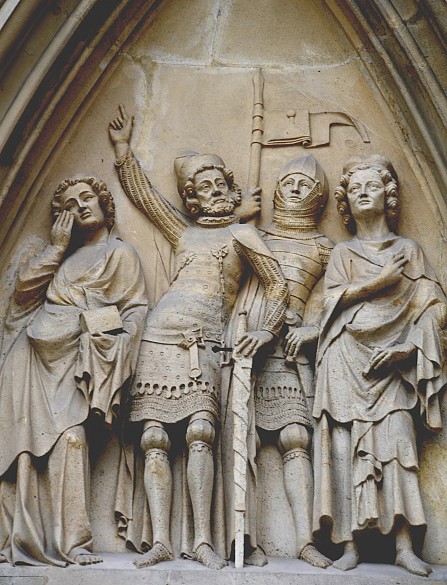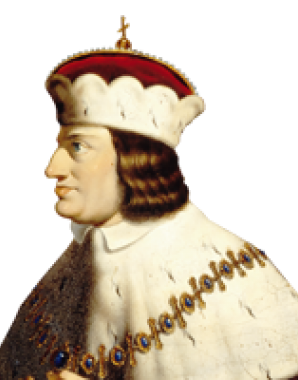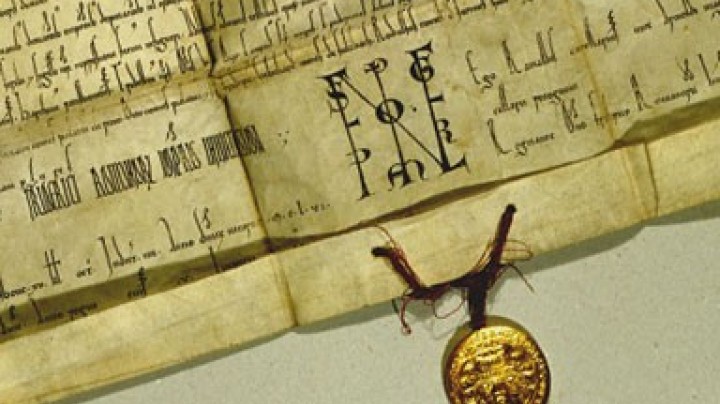Albrecht II, the pragmatist
From an initially unpromising position as younger son, and despite severe physical disability, Albrecht developed into a notable ruler thanks to his pragmatic approach. It is to him that the dynasty owes the consolidation of the Habsburg power base and the acquisition of Carinthia and Carniola.
Albrecht was the fourth of the six sons of King Albrecht I and Elisabeth of Gorizia, the daughter of Meinhard II, Duke of Carinthia and Tyrol. It is assumed that Albrecht, born towards the end of 1298, was the twin brother of Henry, although their exact dates of birth are unrecorded.
As a younger son, Albrecht had little prospect of ruling over a territory. He was thus trained for the Church, a path that ensured he enjoyed an above-average education for his time. At the age of fifteen, he was elected bishop by the cathedral chapter at Passau, but the election was not recognized by the pope. In 1317 he forewent the benefice and returned to the secular estate.
In 1324 he married Joan of Ferrette (1300–1351). The bride brought the Upper Alsatian county of Ferrette into the marriage. This territory remained under Habsburg rule as part of Further Austria until 1648. Since that time it has belonged to France.
In 1326 the administration of the Forelands was assigned to Albrecht. Following the deaths of three of his brothers, in 1330 the head of the family, his elder brother Frederick, also died. The latter’s life had been dominated by the vain attempt to gain the imperial crown for the dynasty.
Now the most senior member of the dynasty, Albrecht decided against continuing to pursue this aim and accepted the overlordship of Emperor Louis of Bavaria from the House of Wittelsbach.
Albrecht II ruled jointly with his younger brother Otto, without always agreeing with the latter’s wayward and erratic policies. Not until Otto died in 1339 did Albrecht become the sole and undisputed ruler of Austria and Styria.
Even at his accession in 1330 Albrecht had started to exhibit the first signs of a serious illness that led to paralysis of the hands and feet, giving him his byname of ‘the Lame’. His contemporaries saw this as signs of an unsuccessful poisoning attempt. Modern historians have speculated these symptoms were the result of food poisoning. It was not until his remains were examined in 1985 that the truth came to light: Albrecht suffered from polyarthritis, an extremely painful form of rheumatoid arthritis.
Although he was physically handicapped – he could hardly walk, let alone ride – Albrecht II is regarded as a notable ruler. During the twenty-eight years of his rule the Habsburgs finally established themselves in the Austrian lands, which they were now ruling in the second generation: the Swabians had become Austrians. A visible sign of this was the foundation of the Charterhouse at Gaming in the foothills of the Alps in Lower Austria by Albrecht, who designated it as his burial place.
Under Albrecht’s rule Carinthia and the Margraviate of Carniola were acquired upon the death of Henry VI of Gorizia, his maternal uncle, in 1335.
Albrecht’s long reign was notable for the moderation of his actions, giving rise to his second epithet of ‘the Wise’. He was regarded as a respected elector whose counsel was sought in a time of turbulence. In 1348/49 the Black Death claimed countless victims throughout Europe. The mid-fourteenth century was indeed a time of catastrophe: the Austrian lands were afflicted by earthquakes and plagues of locusts. In reaction to these natural disasters, stoked by contemporary anti-Semitic propaganda, Jews were persecuted for the first time in a number of Austrian towns and cities. Albrecht’s judicious rule constituted an important corrective: the duke ensured harsh punishments were meted out to the leaders of these pogroms.













